Hiking the Ka’ena Point Trail is a great way to explore the coastal wilds and wildlife on Oahu, Hawaii.
This post contains affiliate links for which Expedition Wildlife may receive a commission (where applicable) at no additional cost to you.
Oahu is a hotbed of stunning scenery, great food, wonderful hikes, and loads of wildlife.
The hiking opportunities are varied and include challenging gorge hikes, historic monument hikes (pillbox), sunrise stunners (mountain), and easier coastal beauties.
Hiking the Ka’ena Point Trail isn’t challenging, but there are plenty of things to keep in mind in preparation for this walk.
This is also one of the top destinations to go birdwatching on Oahu. Here, you will see nesting Laysan Albatross and Black-footed Albatross at certain times of year. As if this wasn’t enough for wildlife lovers, seals and whales can also be seen from this point.
Note: STAY ON THE TRAIL AND WITHIN THE ROPED WALKWAY once you enter the Natural Area Reserve.
This is for the protection of the wildlife found there and your safety.
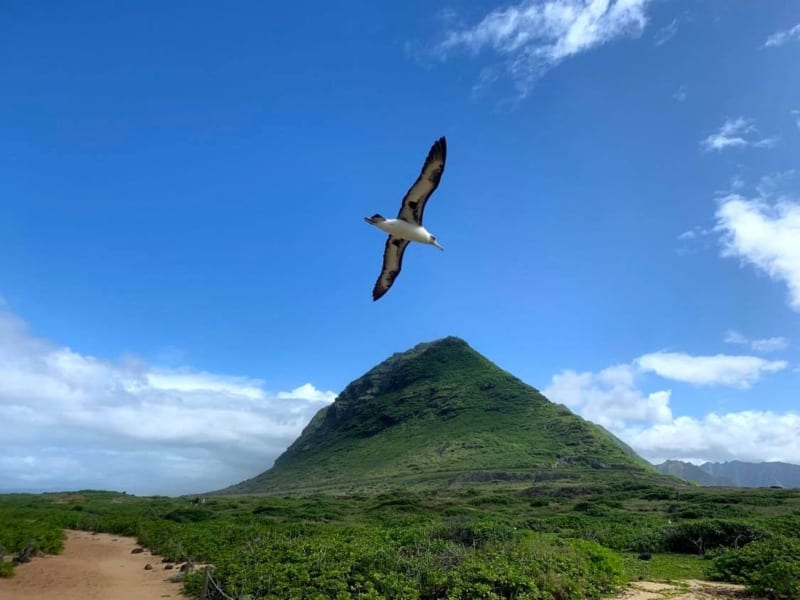
Stunning Laysan Albatross in flight at Ka’ena Point Natural Area Reserve. Photo by Elaine Freeth
Trail at a Glance
| Distance: | 3.5 mi one-way |
| Type: | Out-and-back |
| Difficulty: | Easy |
| Terrain: | Sandy and rocky |
| Access: | Not wheelchair accessible |
| Trailhead: | Two trailheads: one on Wai‘anae side and one on Mokule‘ia side |
Get our FREE guide on How to Identify Birds here!
About Ka’ena Point
Ka’ena Point sits at the furthest northwest corner of Oahu and is only accessible by foot.
The peninsula is made of up the Ka’ena Point State Park and the Ka’ena Point Natural Area Reserve.
In Ka’ena Point State Park, before the Natural Area Reserve, swimming and fishing with a permit are allowed.
However, the Natural Area Reserve is strictly a wildlife and habitat conservation area, so these activities are prohibited.
Additionally, dogs and pets are NOT allowed at Ka’ena Point.
You’ll notice as you approach the Reserve that you must pass through a large fence to access the area. This is a predator fence, designed to keep out feral cats and dogs, and mongooses, which decimate native bird and wildlife populations.
Within the Natural Area Reserve, you’ll also notice roped walkways that direct visitors on the trail. STAY ON THE TRAIL AND WITHIN THE ROPED AREA.
Please take precautions to avoid potentially collapsing a bird burrow under your feet or disrupting the habitat they depend on.
READ MORE | Best places to go birding in the United States
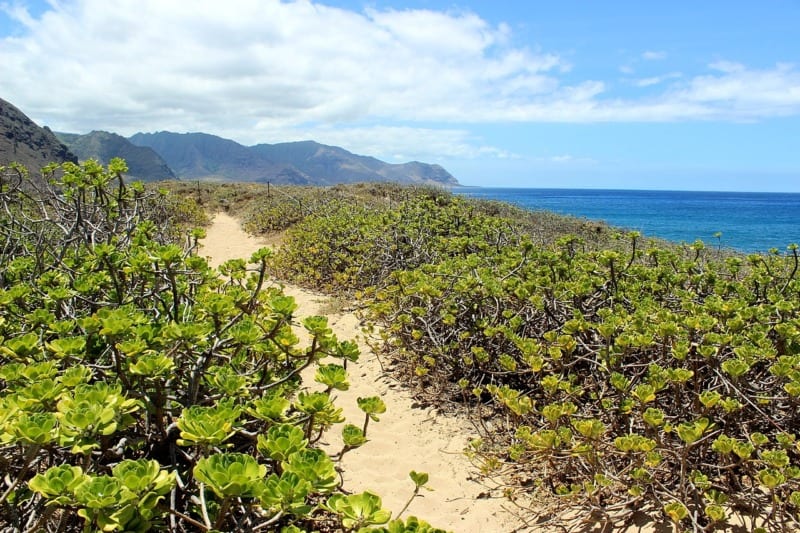
The sandy trails at Ka’ena Point. Photo by Aaron Zhu
Ka’ena Point Trail Details
- The entire trail system from start to finish is 3.5 miles one-way. It’s an out-and-back route, meaning you’ll have to retrace your steps to get back to your car.
- Most people hike from the parking area to the furthest tip of Ka’ena Point, within the Natural Area Reserve. This takes around 5 miles round-trip.
- Because there is relatively little elevation gain and loss and the trail is nearly flat, this is an easy hike to take for a lovely stroll.
- The trails are still sandy and rocky, with exposed lava rock, so good walking shoes are recommended. This also means the trail is not wheelchair accessible.
- The bunker at the tip of Ka’ena point may be roped off to prevent interaction with pupping seals. Please don’t cross the rope if it is in place.
Interested in seeing the Peninsula from above? Consider booking a helicopter flight to tour the island by sky!
Getting to the Trail
Two trailheads can be used to access the trail: the western Wai‘anae parking area and northern Mokule‘ia parking area. Both are at the end of their respective roads and do not connect together.
What’s great about having the two trailheads is you don’t have to cross over the mountains from either side to get to the peninsula.
Personally, I prefer the western trail, as it goes right along the rocky shoreline, and you can see (and hear!) blowholes. Blowholes are where ocean water spouts up and out holes in the lava rock, pressurized from the rolling waves.
For parking, signs warn of keeping valuables out of sight in the vehicle and locking your car!
Note that the coastal roads leading to the trail entry points are increasingly experiencing more off-road drivers. This is a huge issue causing erosion and destruction of sensitive habitat. Staying on the road is important to protecting this beautiful Hawaiian gem!
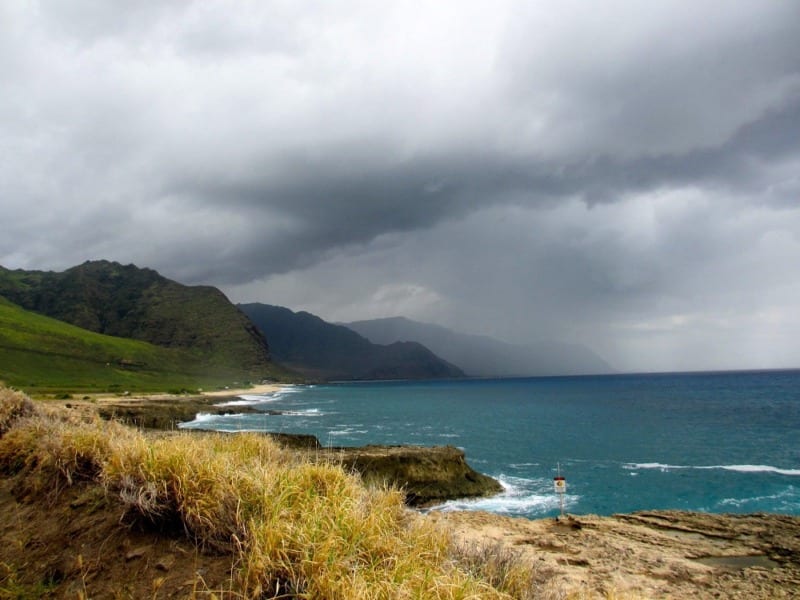
If you visit during the rainy season in Hawaii, starting in late-October, be prepared with a rain jacket! Photo by Christa Rolls
What to Bring on the Trail
Sunscreen and a sun hat
Plenty of sunscreen and a sun hat should help beat back the hot Hawaiian sun.
The hike is exposed the entire time, with no shade or drinking water access along the way.
The coastline can be windy, which might not make you feel as though you’re getting much sun. Don’t fall for it!
We have the Bora Bora Booney hats from Columbia and love them for all our adventuring!
Snacks and water
Since there’s no drinking water access, bring snacks and enough water to get you through the hike. Again, don’t underestimate the heat of the sun on this exposed coastline hike.
We highly recommend bringing along a Camelbak backpack for plenty of hydration on the go.
Good walking shoes
Walking shoes that let you easily hike on sand and lava rocks are a must if you plan to hike the full length of the trail.
Having sand chafe your feet or stubbing your feet on lava rocks would make the experience less than ideal.
For hiking shoes, I have a pair of Vasque Breeze shoes, and Nathan uses the Merrell Moab hiking shoe. Bring on your trip whichever shoe you will want to wear most often while hiking around in various terrain!
Binoculars and camera
If you’re coming to birdwatch, bring your binoculars!
During nesting season, you may see birds close enough that you won’t need them, but lots of wildlife call this area home that aren’t right off the trail.
Consider also bringing along your camera to get some wonderful, scenic shots!
READ MORE | How to photograph wildlife for wildlife photographers
Wildlife at Ka’ena Point
All manner of sea life can be seen at Ka’ena Point, and it’s a really special place for those who love to watch wildlife.
Given this, DON’T TOUCH THE WILDLIFE and DON’T GET NEAR THE WILDLIFE.
Birds
Laysan Albatross, White-tailed Tropicbirds, and Wedge-tailed Shearwaters can be seen nesting near the trail.
In particular, Albatross nest from around November to May. Their nests are made of various grasses and are typically set up against one of the many scrub bushes to protect their nestlings against the elements.
Albatross are some of the most incredible birds in the world, making huge trans-continental journeys throughout their lifetime. They often come back to breed in the same place every year. Also, these birds are stunning and a must-see when visiting Hawaii.
Wedge-tailed Shearwaters have an opposite nesting season from the Albatross, starting around June and ending in November. Alternatively, the nesting season of the White-tailed Tropicbird is less distinct, as they nest at various times throughout the year depending on climate.
This sensitive area is designed for them, so keeping a distance from nests, babies, and birds is important for their survival.
Of course, other bird beauties, including shorebirds, seabirds, and scrub birds can be seen! Download the free Merlin Bird ID app to help with IDing some of these spectacular birds.
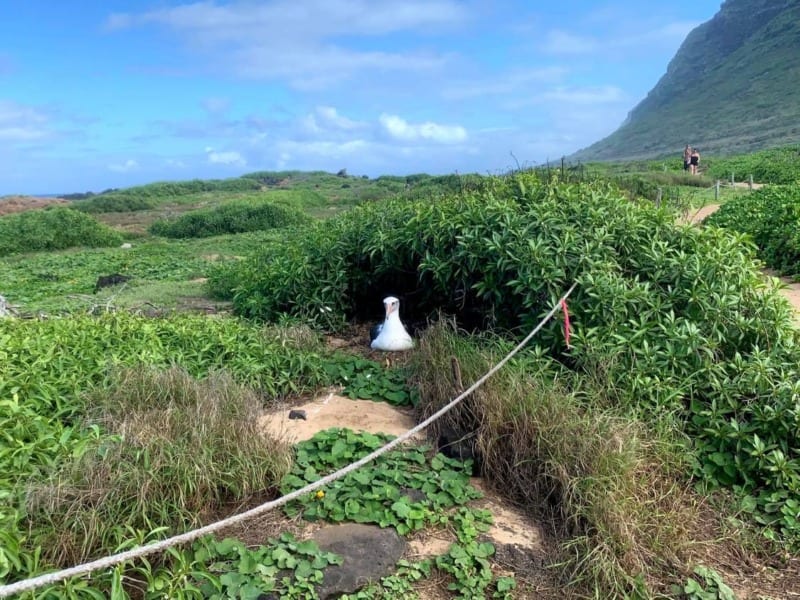
A Laysan Albatross sits on its nest at Ka’ena Point. Note how close they build their nests to the roped walkway. Photo by Elaine Freeth
Seals
Hawaiian Monk Seals also call Ka’ena Point Trail home during the pupping season when they care for their young. Pupping season on Oahu typically starts in spring and goes into the summertime.
This particular species of monk seal is endangered, with only around 1,000 individuals left in the wild. For this reason, it’s very important to ensure they are not disturbed and are left on the sandy shores in peace.
Mother monk seals are incredibly territorial and protective of their babies. For your safety, too, you should avoid getting close to them.
Often during this time, volunteers from the Hawaiian Marine Animal Response team are nearby to ensure people do not interact with the seals and help answer any questions people might have.
If you happen to see a seal with her pup and there is no signage indicating to stay away and no personnel warning the same, please contact the HMAR as soon as possible at (888) 256-9840 to report the sighting. This helps protect these beautiful and rare animals!
READ MORE | How to watch wildlife ethically
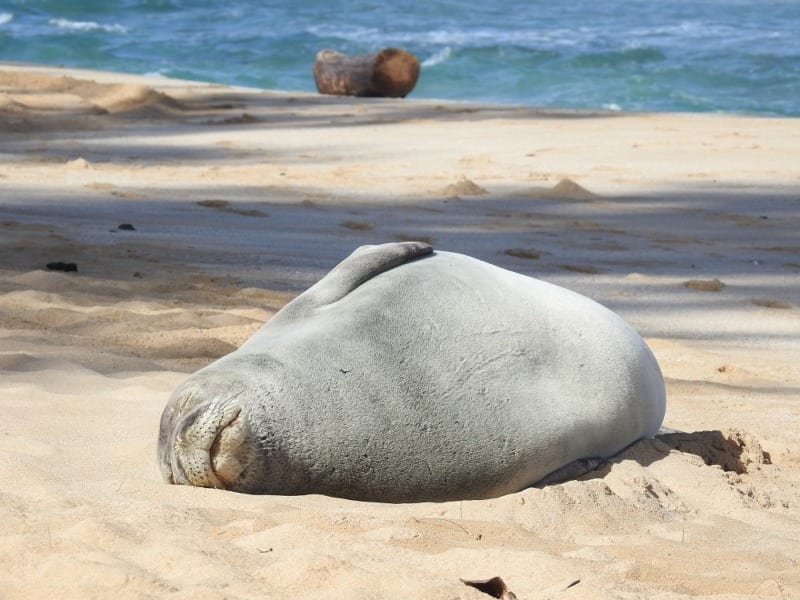
Endangered Hawaiian Monk seals can sometimes be seen lounging on the shores of Ka’ena Point. Photo by Nicota Mari
Whales
In wintertime, whales migrate through Hawaii on their journey across the ocean.
During this time, whales may be seen from Ka’ena Point foraging just off-shore and breaching in the distance. Keep an eye out on the horizon for their tell-tale water spout as they surface.
Having a set of binoculars is especially useful if you plan to spot whales!
Conservation efforts at Ka’ena Point
Predator Fencing
Ka’ena Point is home to one of the largest seabird colonies in the Hawaiian islands. Many of these seabirds are ground-nesting birds, meaning they and their young are vulnerable to disturbances for a couple of months at a time.
Given the impacts of stray cats and off-leash dogs, and other small mammals such as mongooses and rats, on bird populations, the predator fence was built.
The design is to keep unwanted animals out while allowing people to continue visiting for recreational purposes. This way, the impact on the wildlife found here is minimized significantly.
Trail Roping
The Ka’ena Point Trail is clearly delineated by a roped off-trail system. This way, hikers can’t get confused about where they should and shouldn’t be stepping.
Staying on-trail helps to protect the sensitive animals that call this peninsula home, as well as protects the sensitive plants and habitat.
Dune ecosystems are at risk of serious negative impacts from erosion, so staying on the trail helps immensely.
This is also for visitors’ safety, as wild animals can be unpredictable if approached and the surrounding rocky coastline can be treacherous.
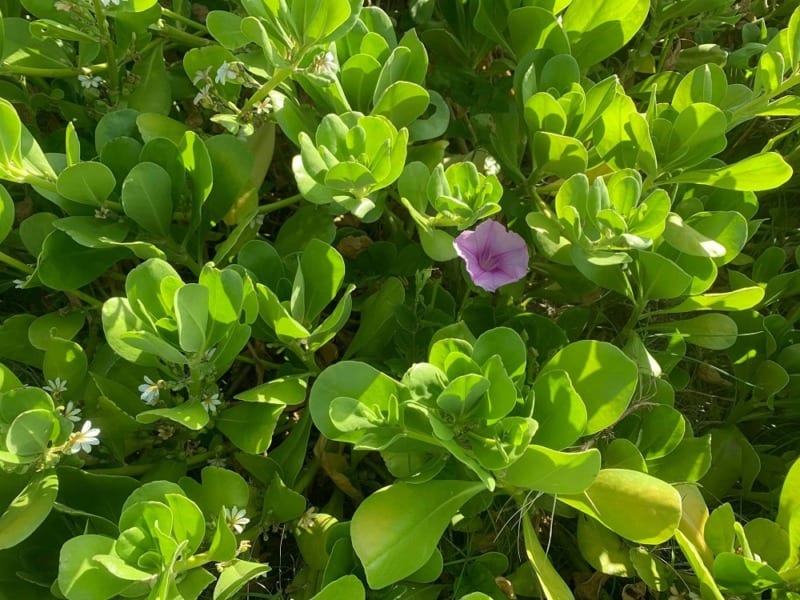
A beach morning glory flower emerges among Naupaka plant, found readily along the sandy coast. Photo by Elaine Freeth
Habitat Restoration
Extensive habitat restoration has been underway at Ka’ena Point for over ten years, and the efforts have paid off.
Restoring habitat includes taking out plants that are not native and have a negative impact on the surrounding environment.
One such example is weedy plants, which can change the ecosystem dramatically, making it inhospitable for native animals, like nesting birds.
Along the coastline, habitat restoration also includes erosion control, to prevent important plants and habitats from washing into the sea.
Bird Surveys and Translocations
Scientists have monitored the sensitive bird populations at Ka’ena Point for years.
Surveys monitor which birds come back from year-to-year and whether nests successfully produce healthy baby birds, for example. This information is used to help determine the overall growth of the bird populations and how well they are faring.
In some cases, birds are “translocated,” or moved from one location to the next to establish them in a new place. Areas closed off from public traffic are set aside on the Ka’ena Point peninsula specifically for birds to have a safe and quiet place to nest.
If successful, more space for nesting birds and more healthy nesting birds means larger bird populations.
…
If you see any animals that are injured or unprotected, please do not approach them. Instead, contact the Hawaii Marine Animal Response team with sightings, reports, and questions.
Often, outreach personnel from HMAR will already be on-site, particularly during bird breeding season and seal pupping season.
Over ninety percent of the educational services offered by HMAR are volunteer, so if you’re interested in volunteering or interning with them, contact them at [email protected] or by phone at (888) 476-HMAR.
If you’re interested in adventure and want to be guided along the way, check out G Adventures!
Have you been to the Ka’ena Point Trail? What wildlife did you have the chance to spot? Let us know in the comments!
Happy hiking!
Christa and Nathan
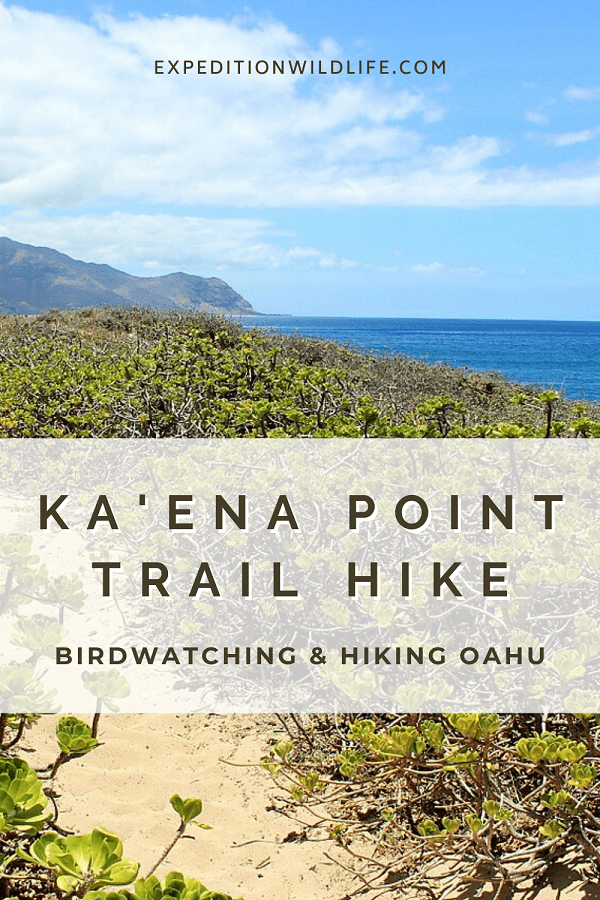

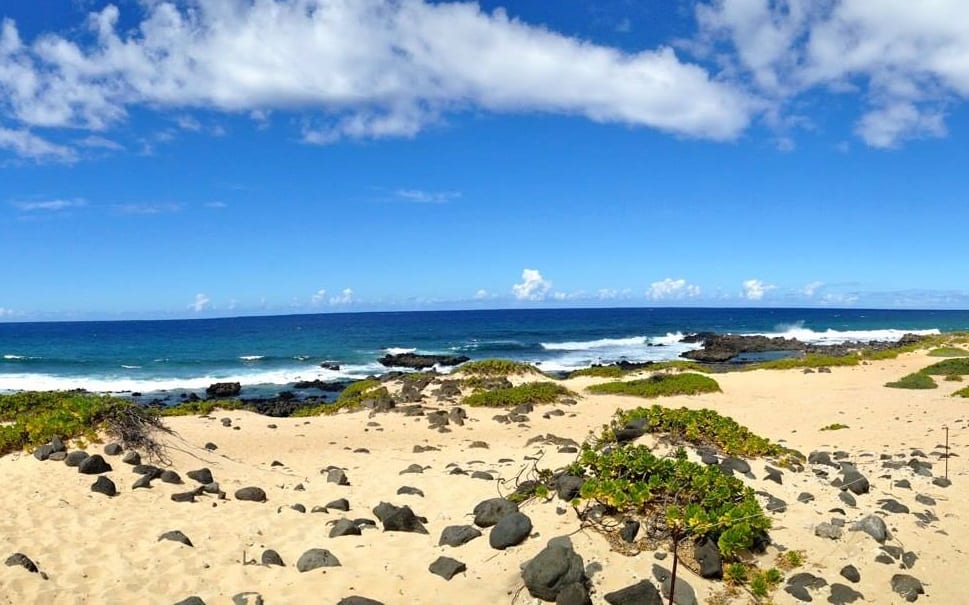
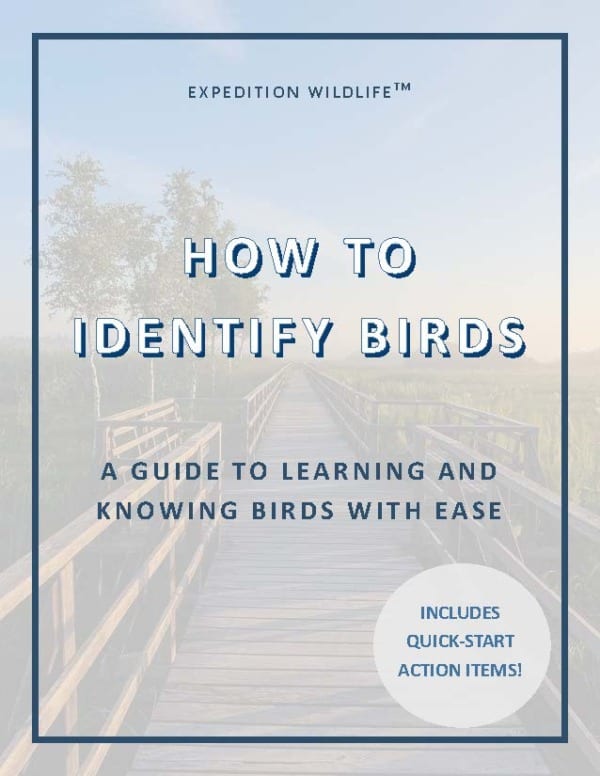
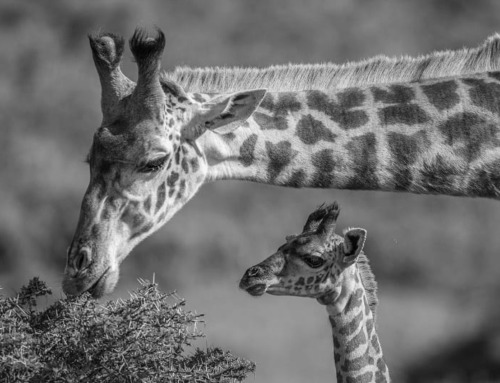
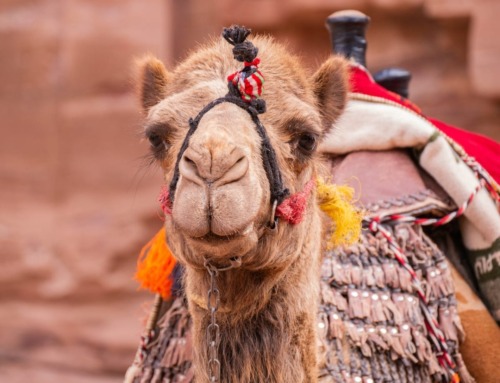
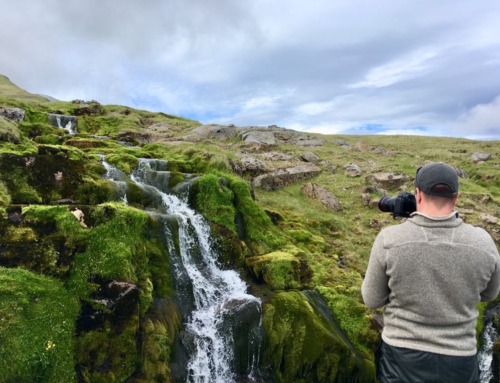
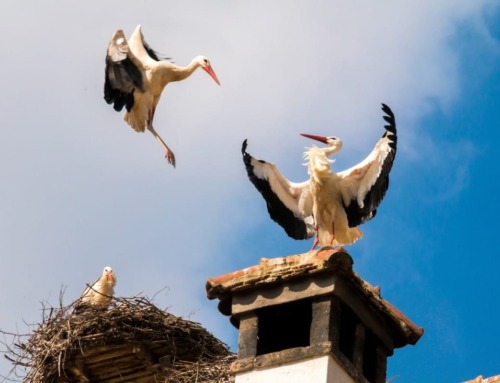
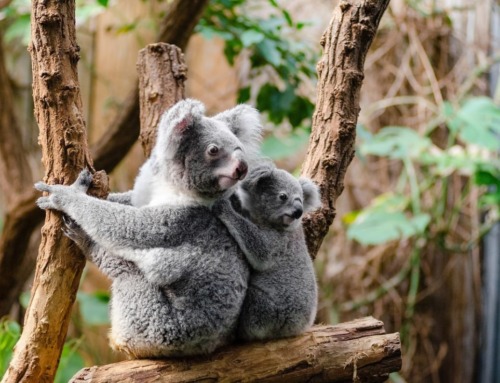
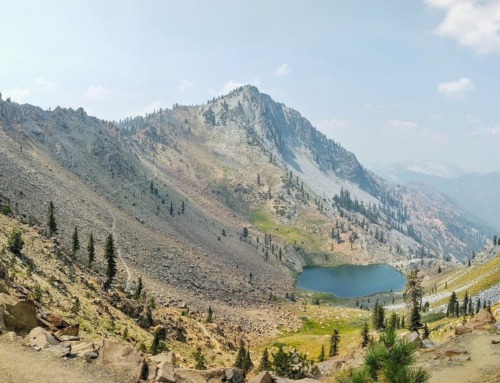
Leave A Comment